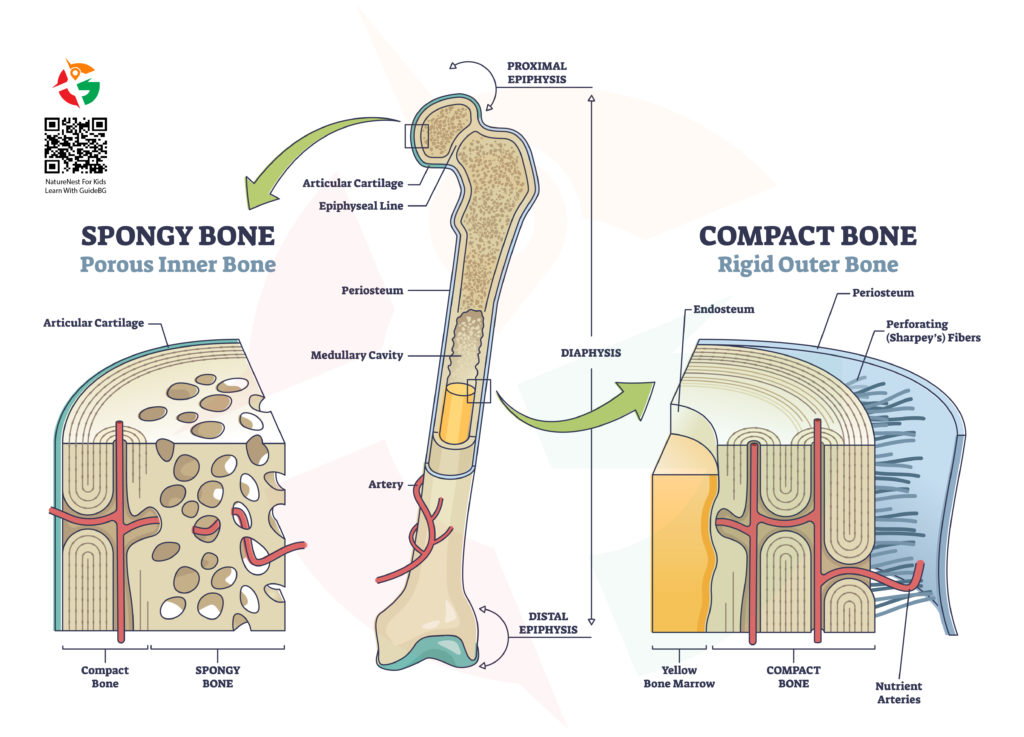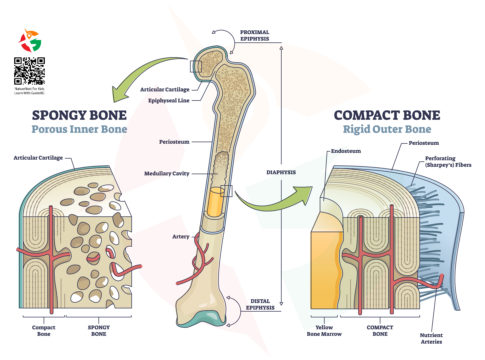Bones: more than just the scaffolding of the body, they are dynamic, living tissues that form the infrastructure of our very being. This exploration delves into the complex anatomy of human bones, revealing the sophisticated interplay of structures that support our every move. From the dense, protective layer of compact bone to the intricate, feather-light design of spongy bone; from the vital blood cell production in the medullary cavity to the intricate vascular network that sustains life within; and from the growth-telling epiphyseal line to the regenerative prowess of the periosteum and endosteum – each component plays a crucial role in the living tapestry that is the human skeletal system.
Compact Bone: The Fortified Barrier
The outermost layer of our bones, compact bone, is the robust sentinel that stands guard over the more delicate internal structures. It’s densely packed, making it superb for withstanding the daily grind. Consider it the reinforced concrete of your skeletal high-rise.
Spongy Bone: The Ingenious Lattice
Beneath the compact bone lies the spongy bone, a labyrinthine structure with a porous matrix. This isn’t your average sponge; it’s a masterclass in engineering, offering your bones exceptional resilience while keeping them as light as a feather.
Medullary Cavity: The Vitality Core
The medullary cavity, a chamber hosting the precious bone marrow, thrives inside the sturdy confines of your bones. This inner sanctum churns out blood cells, equipping your body with the oxygen carriers and defenders it needs to thrive.

The Circulatory Network: Nutrient Arteries
Embedded within bone tissue, nutrient arteries, and their venous counterparts form a bustling circulatory network. These vital conduits deliver life-sustaining nutrients and oxygen, ensuring your bones are never in need.
Learn about different types of blood vessels in your body.
Epiphyseal Line: The Record of Growth
The epiphyseal line is the telltale signature of growth within your bones. Located at the proximal and distal epiphyses, it’s a remnant of the epiphyseal plate that once allowed bones to elongate, much like marks on a doorway that chart a child’s height.
Periosteum and Endosteum: The Dynamic Duo
The periosteum is a fibrous membrane that encases the bone and nurtures bone tissue. The inner lining, the endosteum, houses bone-forming cells vital for growth and repair. Together, they’re the dynamic duo dedicated to regeneration and vitality.
Understanding these complex structures and processes can help students approaching adulthood appreciate the intricate beauty of their skeletal system. It’s not just a collection of bones—it’s a dynamic framework that supports, protects, and sustains life itself.



